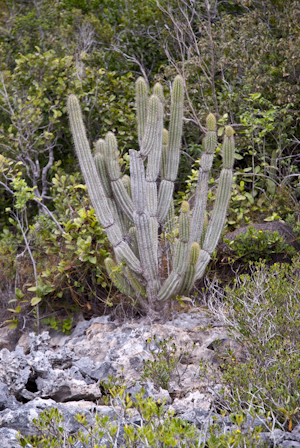
Copyright by: Keith A. Bradley
in habitat, Abaco Island, Bahamas, 2006
Family: Cactaceae
Group: Dicot
Substrate:
Terrestrial
Habit:
Shrub
Perennation:
Perennial
Native Range: South Florida and the West Indies (Cuba, Bahamas).
Map of select IRC data for peninsular Florida
Florida Natural Areas Inventory State Status:
Critically Imperiled
IRC SOUTH FLORIDA Status:
Critically Imperiled
SOUTH FLORIDA Occurrence:
Present
SOUTH FLORIDA Native Status:
Native
South Florida History and Distribution: Ranked as critically imperiled in Rare Plants of South Florida (
Gann et al. 2002; pp 496-497) based on four occurrences in two conservation areas (Long Key State Park, National Key Deer Refuge) and three non-conservation areas (privately owned Layton Hammock, privately owned Teatable Hammock and privately owned hammock on Lower Matecumbe Key) in the Monroe County Keys. New plants have been found at Key Tree Cactus Preserve on Upper Matecumbe Key in Islamorada and Teatable Hammock is now protected within Lignumvitae Key State Park. Plants at the remaining two private parcels are considered possibly extirpated.
SOUTH FLORIDA Cultivated Status:
Cultivated
Comments: For a recent taxonomic revision of this and other Caribbean
Pilosocereus, see
Franck et al. (2019). For a current review of
P. robinii, see the U.S. Fish and Wildlife
Species Profile. See also our
Natives For Your Neighborhood website and Florida Natural Areas Inventory's
Field Guide to the Rare Plants of Florida page (Chafin 2000). For a digitized image of Elbert Little's Florida range map, visit the
Exploring Florida website. Some records of this in South Florida may refer to
P. millspaughii.
Synonyms: P. bahamensis; Pilosocereus polygonus, misapplied.
